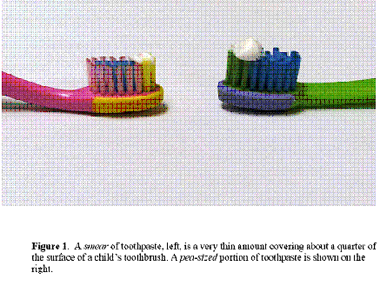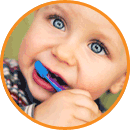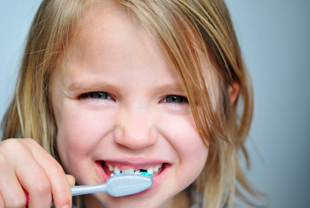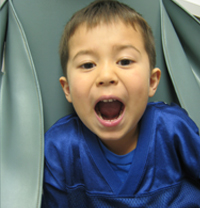Your Child's First Visit
To make their first visit a positive experience, set it for a time when your child will be well rested and relaxed. Treat the appointment as routine and bring along a favourite toy or blanket.
We will examine your child’s teeth and discuss their diet, how to clean their teeth properly and other factors that can affect oral health. While the child may cry, this is only a temporary upset. Fluoride may also be applied to their teeth.
We recommend that your child have dental visits twice a year. This allows the dentist to catch any potential problems early, which, with early intervention, may prevent the problems from getting much worse. Children who are at increased risk of tooth decay, have unusual growth patterns, or who have poor oral hygiene may need more frequent visits.
X-Rays and Your Child
Under some circumstances, like an accident involving the mouth, dental X-rays may be done on children as young as a year old. The x-rays are safe for your child. We are careful to limit the amount of radiation to which children are exposed.
Helpful Tips for Successful Dental Treatment for Your Child
Say only positive remarks about the visit, like “the dentist is going to look at your teeth and help fix them.” Do not use any negative words or statements, like “Don’t worry, it won’t hurt!” Children with no dental experience will not have expectations that the visit will be unpleasant unless you give them that idea.
You may choose to come into the treatment room with your child. However, some children behave better when parents are not present. If asked to leave, please be ready to immediately walk away.
Please be a SILENT observer. Do not ask your child “Does it hurt? or “Is it painful?”
You may support your child by holding their hand or stroking their arms and legs.
We have put together a document which outlines some Parent Guidelines to help ensure a successful, positive visit for you and your child.
Fluoride Varnish Parent Information
It is a dark-yellow gel that dries to a yellow-white colour. The varnish will be visible on your child’s teeth for a few hours, which is a good thing. To preserve the varnish as long as possible, do not brush your child’s teeth until the next day.
It is okay for your child to eat and drink normally. It is also okay if the varnish falls off and is accidentally swallowed.
Fluoride Toothpastes and Mouth Rinses
Fluoridated toothpaste should be used twice per day with a minimum amount of water used to rinse the mouth after brushing.
It is recommended that children less than 3 years of age have their teeth brushed by an adult using a minimal amount or “smear” of fluoridated toothpaste (see figure 1), as excessive swallowing of toothpaste by young children may result in dental fluorosis.
Children 3-6 years of age should be assisted during brushing and only use a small amount (e.g. pea-sized portion – see figure 1) of fluoridated toothpaste.
All children should be supervised or assisted until they develop appropriate manual dexterity.
Fluoride mouth rinses are an effective preventive measure for at risk individuals and should be used according to the specific needs of the individual.
Fluoride mouth rinsing is not recommended for children under 6 years of age.












